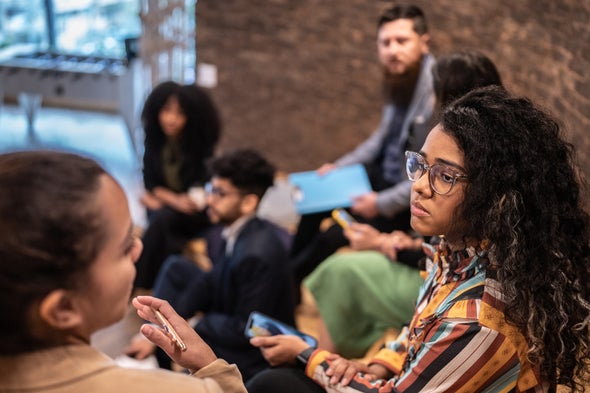The Supreme Court’s actions on affirmative action are a setback to justice and equality in the U.S.
Thank you for reading this post, don't forget to subscribe!
The judges who delivered the majority opinions in Students for Fair Admissions v. Harvard University and the University of North Carolina in June interpreted the Equal Protection Clause of the 14th Amendment—long used to prevent racial discrimination against people of color—to uphold the idea that race should never be discussed in society, let alone be a positive factor in educational decision-making. This ahistorical interpretation, and the broader pushback against the diversity that it represents, leaves anyone who isn’t a cisgendered white man with fewer opportunities than before.
Success is not a finite resource. Society does better, generation after generation, when we extend educational opportunities to people who historically haven’t gotten them. White students benefit educationally from diversity. Black people live longer when they have Black doctors. In study after study, more diversity makes for better work. More innovation happens. More people make money to support the economy. And accomplishments are more meaningful when we lift others up, instead of pulling the ladder up.
State laws already tell us what we need to know about a nationwide ban on affirmative action: making it illegal will reduce the number of minority students who attend college. This deficit will trickle up the education chain. A study of public medical school admissions in states with affirmative action bans showed a drop of nearly 5 percentage points in students from underrepresented groups after the bans took place, while enrollments in other states inched up. And the number of minority students who got STEM degrees in states that prohibited affirmative action fell approximately 10 percent in just five years after the bans set in.
What the affirmative action decision means is fewer Black lawyers who will eventually become partners, judges and justices of the Supreme Court, fewer Latinx doctors in a country where this demographic is rapidly growing and is reaching plurality or majority in some states. There will be even fewer Native American scientists than today in a STEM world that is still overwhelmingly white.
The Harvard suit was brought by a group of students with Asian heritage who said that the university lowered their admissions rankings based on race, making it harder for them to get in. But people with an Asian background are not a monolithic group, and educational achievement varies. While still higher than the average national enrollment rate of about 40 percent, at 57 percent, students with Southeast Asian ancestry in the U.S. are less likely to be enrolled than other Asian Americans (Chinese ancestry, 78 percent, South Asian ancestry 68 percent) and far less likely to have a college degree than other Asian Americans. Some 54 percent of Asians overall have a bachelor’s degree or more, but few Asians ever reach the C-suite, and they still face discrimination throughout their careers.
This decision is not limited to academic America. Every company with diversity goals is now on higher alert for lawsuits. Every civic agency struggles with how to diversify under the strain of a costly legal battle should a white person not get the job or promotion they want. This fear and uncertainty are by design. And the designers cannot be allowed to succeed.
Different upbringings, social norms and perspectives enrich our world; every generation of immigrants to the U.S., whether European or otherwise, has changed the very definition of what it means to be American. But too many people with too much power have tried to stop this evolution. In one year, our stacked Supreme Court has made it harder than it already is to be a woman, a person of color, someone who is LGBTQ or someone who cannot pay for college outright. In each of the conservative majority’s decisions, outcomes will be bad for many, including white people, but worse for someone who isn’t white.
The status quo doesn’t need equal protection—and the 14th Amendment, adopted after the Civil War to protect formerly enslaved people, has long been interpreted to protect those who need it. To that end, we call on Congress and the Biden administration to ensure protection for students of color (and ultimately, white women, who have long been the biggest beneficiaries of affirmative action and who will also lose out as such laws expand beyond race to gender). We call on institutions of higher learning to respond to the evidence their own scholars have gathered supporting race-based affirmative action. Find ways to uphold and strengthen diversity goals in admissions, help build pipelines of college-ready students from underrepresented groups, and work hard to keep them there.
There is no such thing as a color-blind society, even Justice Clarence Thomas said in his concurring remarks. He then decreed, regardless, that the Constitution must be interpreted so. There is no such thing as a color-blind country, said Justice Ketanji Brown Jackson in her strong dissent: “deeming race irrelevant in law does not make it so in life.” Her reply demolished the arguments made by Thomas and Justice Amy Coney Barrett, who have benefited from affirmative action but see no need to share the wealth.
In the end, we quote Justice Sonia Sotomayor in her sometimes-scathing dissent in saying, “race has always mattered and continues to matter.” She knows of what she speaks, as do the many of us at Scientific American who have benefitted from affirmative action, and the decisions in these cases must not be the final word.

